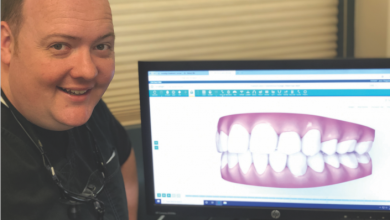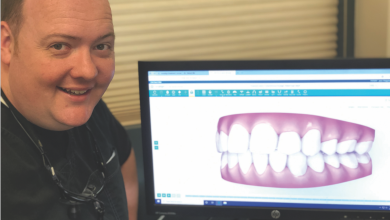Implant Complications
Years ago I used to climb mountains. A friend and I had planned to climb Denali by the original ascent route. In preparation for this, I obtained a copy of accident reports so that I could study what others had had trouble with. There are a lot of things that can happen while climbing a mountain. Some of these I had thought of – falling in a crevasse, hypothermia, and becoming disoriented. Others, I had not, like being blown off of the mountain by high winds. Whatever the cause of trouble, it was a good exercise to read these accident reports and learn from the experience of others. And while preparation doesn’t completely eliminate the possibility of problems, it greatly reduces the possibility and when problems do occur, it usually helps to lessen the effects.
This thought process has carried over into my professional work. Some of my most used textbooks are the ones that deal with complications. Now, some, due to marketing platitudes and media mis-information, believe that dental work is “permanent”. Permanent is a word that I would like to remove from everyone’s vocabulary. Very, very few things are actually permanent, especially in dentistry.
People often ask why their teeth are wearing out. Teeth are like tires. We use them everyday, just like we use tires. And just like tires wear as they are used, teeth wear out. Teeth are exposed to chewing forces, and clenching/grinding forces. They are exposed to acid – from acidic food, from stomach acid, and from acid produced by bacteria. And that acid dissolves the crystalline enamel structure, creating cavities.
Teeth replacements also wear out. There is no reason why we should expect a replacement tooth to last longer than a natural tooth under similar circumstances. And in many cases, the materials used for teeth replacement are simply not as durable as the original, natural tooth structure is. That being said, the technology for replacing missing teeth has improved significantly over the years.
Forty years ago, if someone had no teeth and wanted to stabilize their denture they could have subperiosteal implants. These were large frameworks that rested on top of bone and beneath gum tissue. Surgery was invasive and retention of the implants was not very good. Then, Dr. Per-Ingvar Branemark discovered bone would fuse with titanium and “root form” dental implants were developed soon after. Fast forward to today and dental implantology, once a fringe enterprise, has evolved into a sophisticated methodology for replacing missing teeth and restoring lost function.
However, for all of the advancements made in the field of implantology, dental implants are still subject to the damaging effects of excessive force and bacterial infection. When I talk about implants with patients, I do not use the word permanent. I talk about the advantages and disadvantages of different forms of tooth replacement. Most often, the replacements of choice are dental implants. I then talk about how to care for implants, about how implants are subject to mechanical forces and how to manage those forces. And I discuss how bacterial infection can damage the bone surrounding implants, just as it can around natural teeth.
So, what are some of the complications that can occur with dental implants? For the purposes of this article, I will limit the discussion to two areas: 1) prosthetic complications and 2) periodontal complications.
Prosthetic Complications:
These are complications that deal primarily with the mechanical breakdown of the implant and/or the implant/restoration connection. It is common knowledge that parafunction (night time clenching and grinding) produces extreme amounts of force. As chewing muscles contract and teeth come into contact, force is transferred into the crown and from the crown into the abutment, into the implant, and ultimately into the bone that supports the implant. This excess force can cause damage anywhere along the way – broken porcelain on the crown, a loosened or broken abutment screw, a broken implant platform, and/or bone loss around the implant.
With any of these complications, a patient will notice signs and symptoms – roughness from broken porcelain, a loose crown from screw loosening or breakage, or increased irritation and inflammation in the gum tissues immediately surrounding the implant as a result of bone loss around the implant. Any of these problems can occur through no fault of anyone and come about simply as wear and tear – just as tires wear out. And just as some drivers wear out tires faster than others because of their driving style, some people wear out dental work faster than others because conditions in their oral environment.
Periodontal Complications:
These are complications that deal primarily with poor hygiene. Good dental health requires a combination of proper home care, proper diet, and proper professional care. If an individual does not maintain adequate bacterial (plaque) removal, then the residual bacteria that remain will begin to break down the gum and bone tissues the surround and support teeth. And while it is true that a dental implant will not decay, the bone and gingival tissue around a dental implant will still become inflamed and develop infection with chronic exposure to bacteria.
So, we teach patients how to clean around their dental implants, we follow up with them at regular re-care appointments, and we work to help them be successful in their home care. In some cases we have even had weekly appointments to coach individuals and help them develop the skills they need to properly care for their teeth and teeth replacements.
I hope this has been useful information. If you are missing teeth and would like restored esthetics and/or function, please give us a call for a consultation :^)


